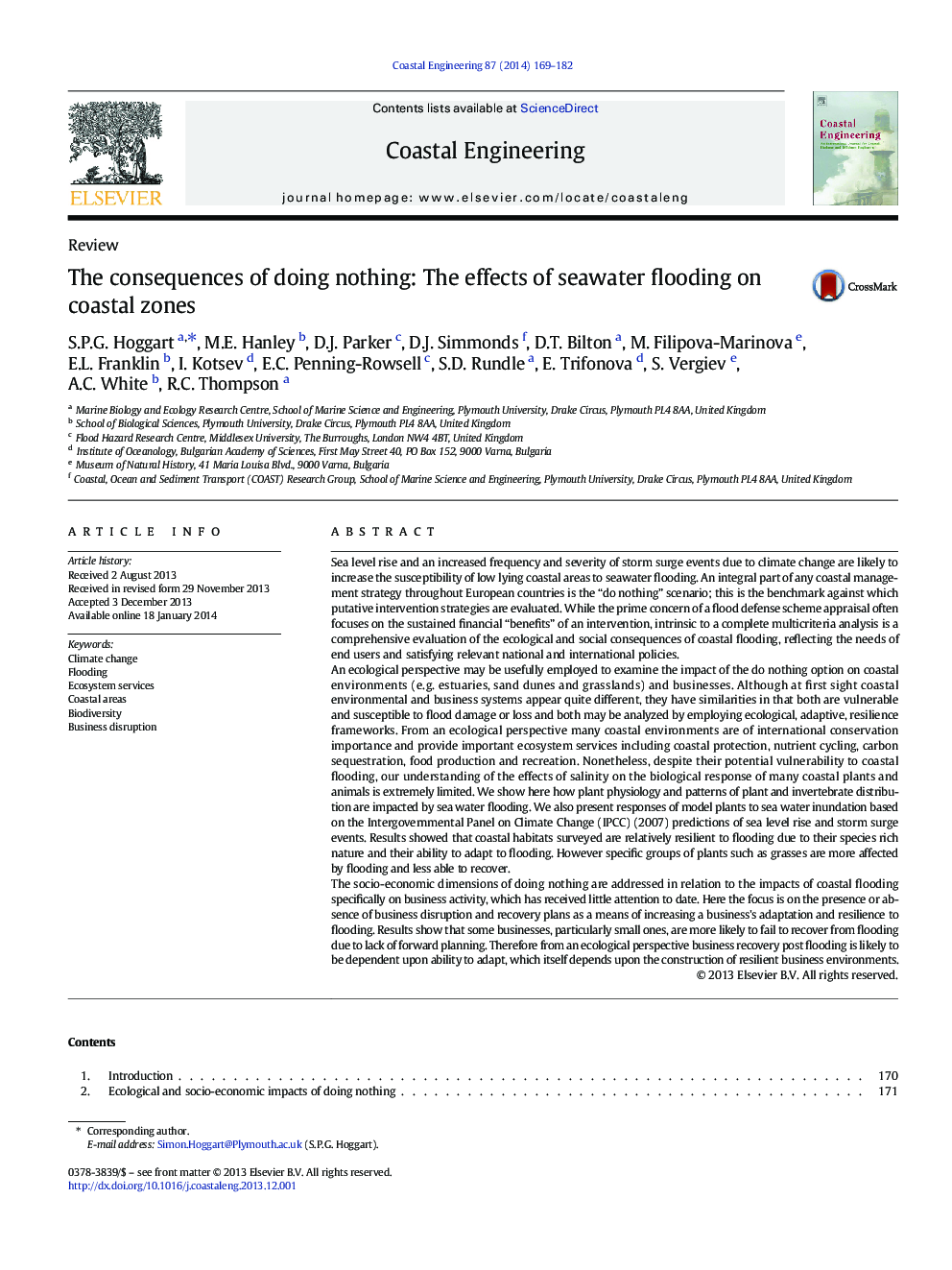| کد مقاله | کد نشریه | سال انتشار | مقاله انگلیسی | نسخه تمام متن |
|---|---|---|---|---|
| 1720831 | 1520367 | 2014 | 14 صفحه PDF | دانلود رایگان |
• Understanding of seawater flooding on terrestrial flora and fauna is limited.
• Little attention has been given to the effects of flooding on business activity.
• Coastal habitats are quite resilient to seawater flooding.
• Businesses are poorly prepared for coastal flooding.
• An ecological approach to business management could increase resilience.
Sea level rise and an increased frequency and severity of storm surge events due to climate change are likely to increase the susceptibility of low lying coastal areas to seawater flooding. An integral part of any coastal management strategy throughout European countries is the “do nothing” scenario; this is the benchmark against which putative intervention strategies are evaluated. While the prime concern of a flood defense scheme appraisal often focuses on the sustained financial “benefits” of an intervention, intrinsic to a complete multicriteria analysis is a comprehensive evaluation of the ecological and social consequences of coastal flooding, reflecting the needs of end users and satisfying relevant national and international policies.An ecological perspective may be usefully employed to examine the impact of the do nothing option on coastal environments (e.g. estuaries, sand dunes and grasslands) and businesses. Although at first sight coastal environmental and business systems appear quite different, they have similarities in that both are vulnerable and susceptible to flood damage or loss and both may be analyzed by employing ecological, adaptive, resilience frameworks. From an ecological perspective many coastal environments are of international conservation importance and provide important ecosystem services including coastal protection, nutrient cycling, carbon sequestration, food production and recreation. Nonetheless, despite their potential vulnerability to coastal flooding, our understanding of the effects of salinity on the biological response of many coastal plants and animals is extremely limited. We show here how plant physiology and patterns of plant and invertebrate distribution are impacted by sea water flooding. We also present responses of model plants to sea water inundation based on the Intergovernmental Panel on Climate Change (IPCC) (2007) predictions of sea level rise and storm surge events. Results showed that coastal habitats surveyed are relatively resilient to flooding due to their species rich nature and their ability to adapt to flooding. However specific groups of plants such as grasses are more affected by flooding and less able to recover.The socio-economic dimensions of doing nothing are addressed in relation to the impacts of coastal flooding specifically on business activity, which has received little attention to date. Here the focus is on the presence or absence of business disruption and recovery plans as a means of increasing a business's adaptation and resilience to flooding. Results show that some businesses, particularly small ones, are more likely to fail to recover from flooding due to lack of forward planning. Therefore from an ecological perspective business recovery post flooding is likely to be dependent upon ability to adapt, which itself depends upon the construction of resilient business environments.
Journal: Coastal Engineering - Volume 87, May 2014, Pages 169–182
